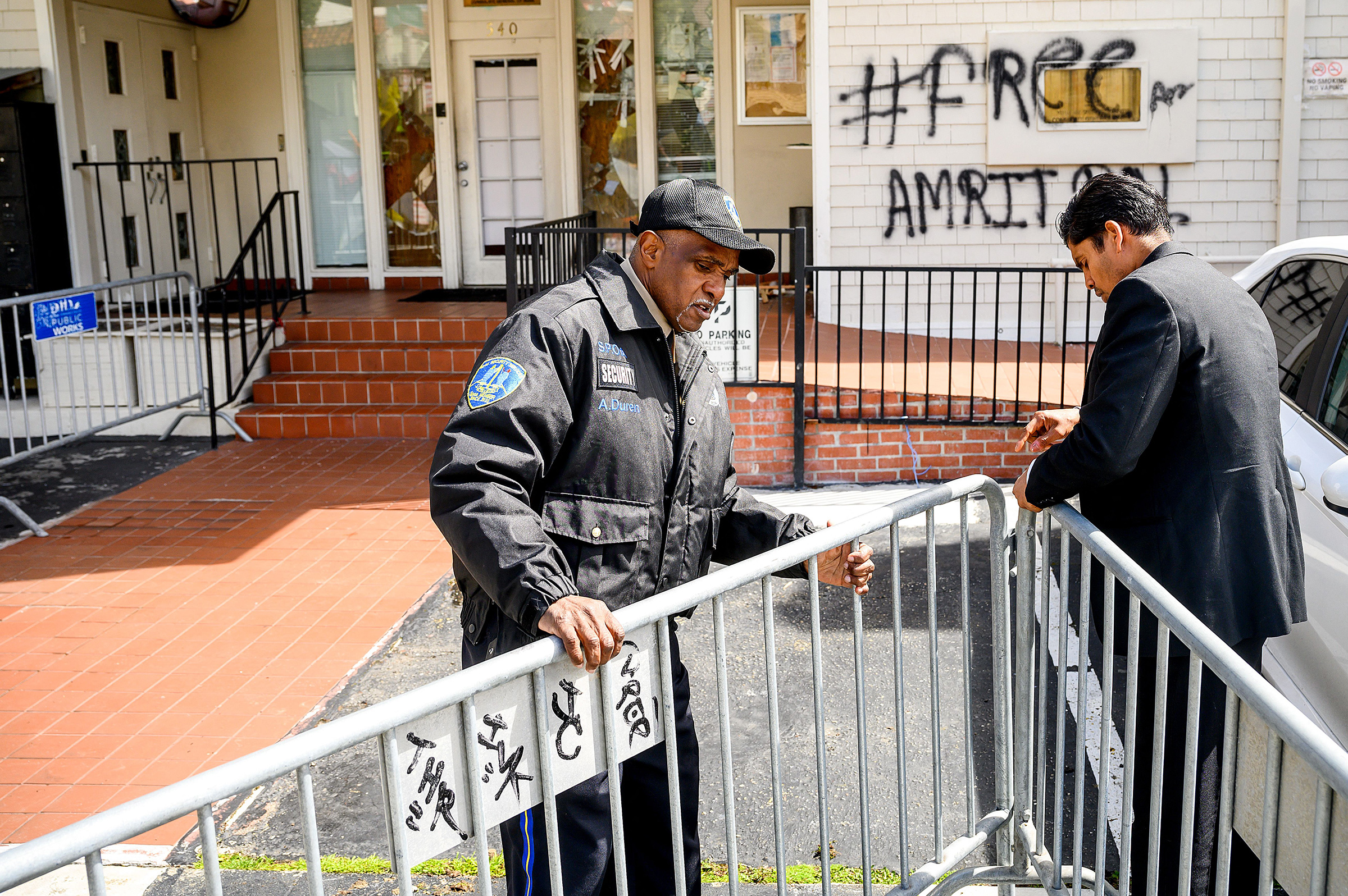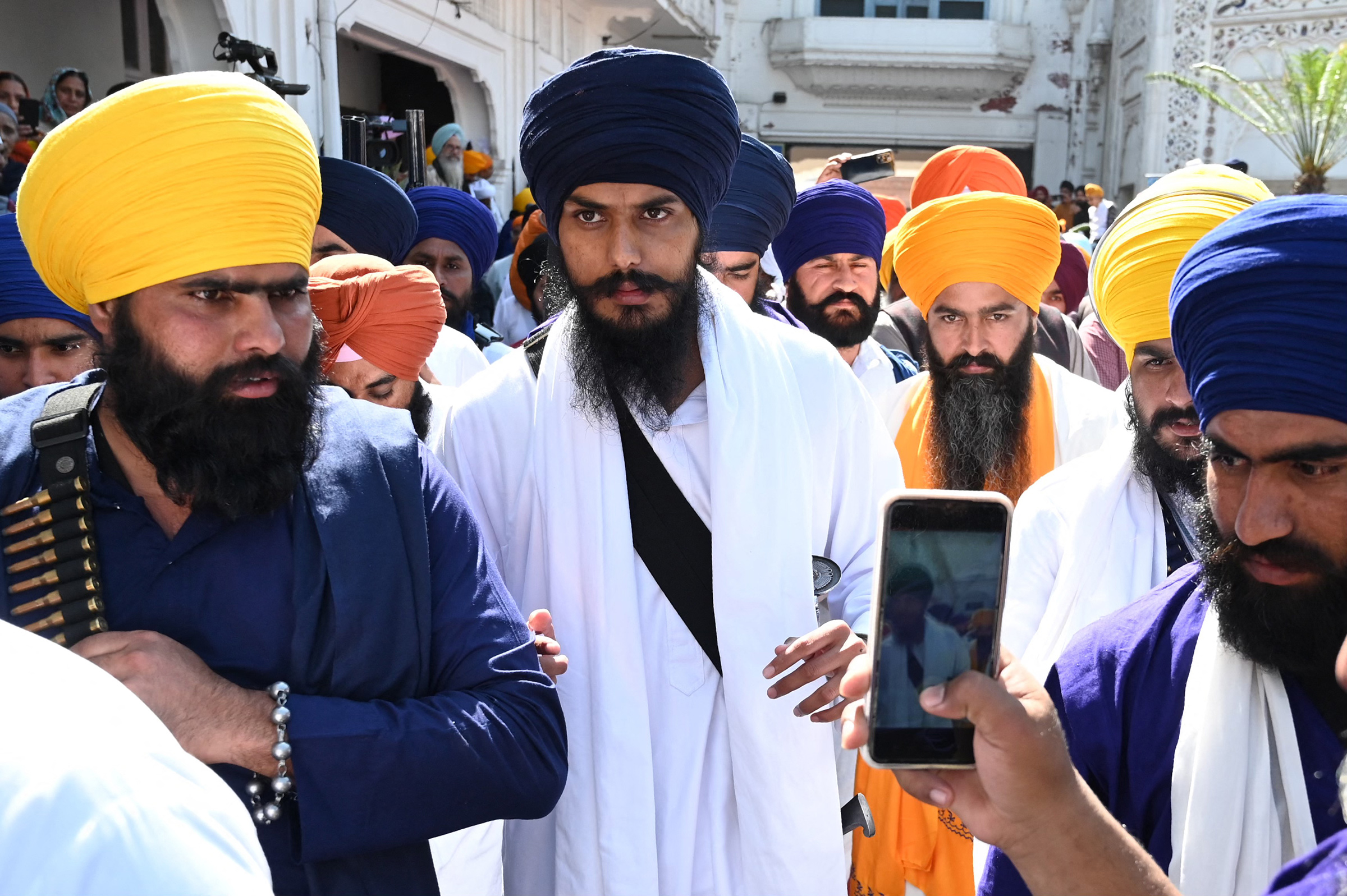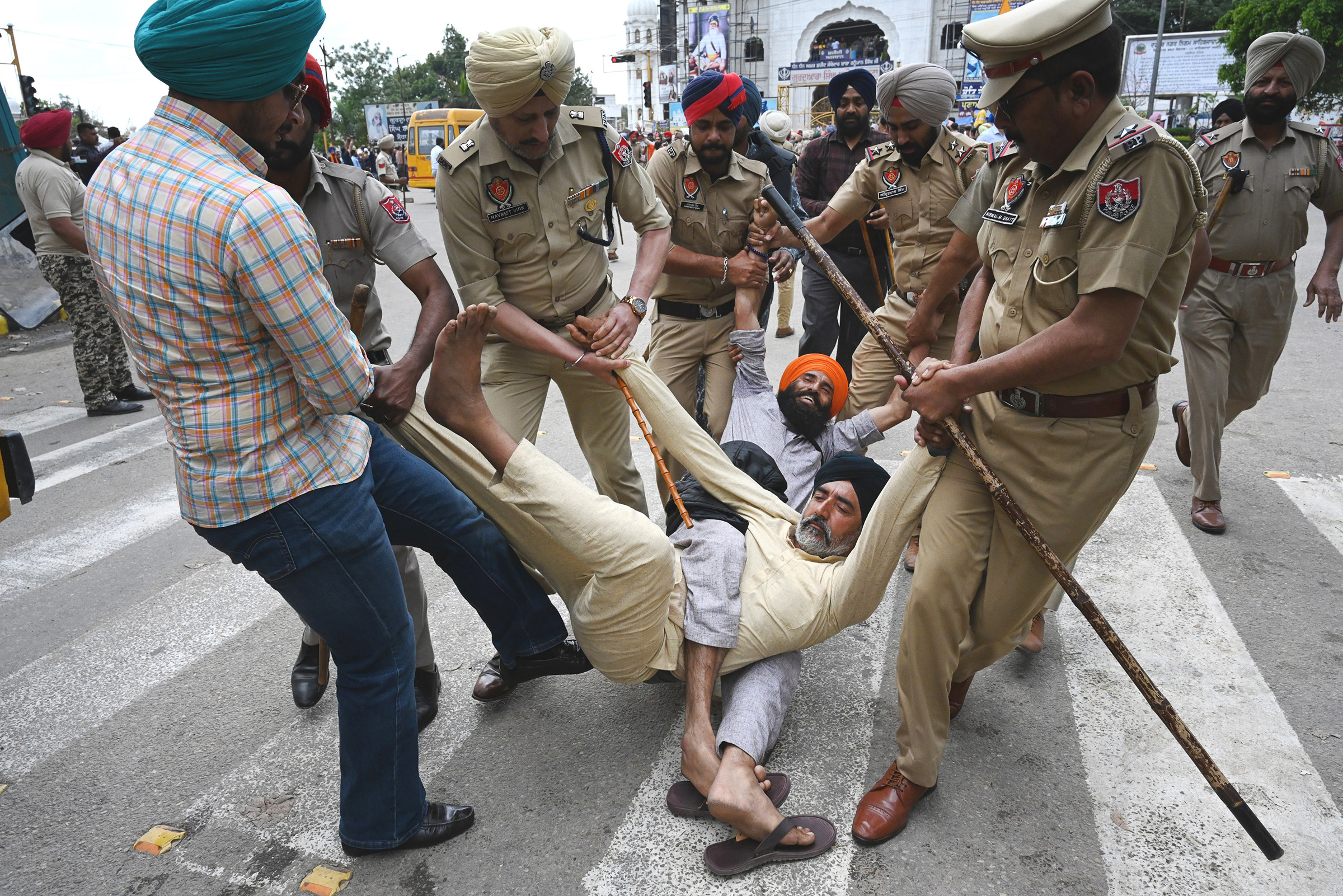
For six consecutive days, authorities in India have been on a nationwide hunt for Amritpal Singh, a hardline Sikh leader from the northwestern state of Punjab who rose to prominence for supporting the Khalistan movement, which calls for the creation of an independent Sikh homeland.
30-year-old Singh has been on the run since March 18. To find him, authorities have deployed thousands of paramilitary police and restricted Internet and mobile messaging services across the state—forcing nearly 30 million people to go offline.
Singh leads a group called Waris Punjab De, which means “the heirs of Punjab,” and made national headlines in February when hundreds of his supporters stormed a local police station with guns and swords to demand the release of a jailed aide.

So far, the police have arrested more than a hundred people linked to the incident, including Singh’s uncle and driver. On Sunday, an official told the local press that the police preemptively arrested individuals who were “attempting to disturb law and order in Punjab.”
Here’s what to know about the events unfolding:
Who is Amritpal Singh?
Singh is a self-styled preacher who rose to prominence after the year-long farmers’ protests in 2020 against new agricultural laws proposed by Indian Prime Minister Narendra Modi (the government repealed the laws in November 2021). Before this, he was a relatively unknown truck driver who ran a car rental business in Dubai.
During the protests, Singh joined Waris Punjab De, founded by actor and activist Deep Sidhu to mobilize farmers. After Sidhu was killed in a car crash in February 2022, Singh took over the group and continued to campaign for Sikh rights by giving impassioned speeches against rising Hindu nationalism sentiments under the Modi administration and social issues like rampant drug addiction in Punjab. His speeches resonated with many Sikhs and have led to his rising popularity.
Singh has also likened himself to Jarnail Singh Bhindranwale, a Sikh separatist figure who led the Khalistan movement and was killed by the Indian army in 1984 who, on the orders of former Prime Minister Indira Gandhi, stormed the Golden Temple in Amritsar, the holiest shrine of Sikhism. Among the Sikh community who felt targeted by the government, the operation was met with anger and led to further communal tensions. Gandhi was assassinated by her Sikh bodyguards in the aftermath.
Last month, he generated controversy for making threatening comments against the Indian Home Minister, Amit Shah, by suggesting the minister could meet the same fate as Gandhi for speaking against the Khalistan movement.

Why was the Internet banned?
The state government of Punjab, which is led by the opposition Aam Admi Party, initially announced a 24-hour ban on mobile internet and SMS services on Saturday while armed forces launched an operation against Singh. But since then, authorities have extended the ban to prevent the spread of fake news, rumors, and misinformation on social media that they say could spark further violence.
Many of Singh’s supporters have posted on social media. One video live steamed on Facebook and Twitter showed the leader being chased by the police through wheat fields in Punjab. Singh’s father, Sardar Tersem Singh, also posted on Twitter, asking all Punjabis “to raise their voice against the injustice against him and stand with him.” His post quickly went viral.
Amid the crackdown, the Indian government also requested Twitter to withhold 122 Twitter accounts in connection to the incident, according to Twitter’s disclosure to the Lumen Database. However, many of these accounts are not connected to Waris Punjab De, with the list including Canadian politicians Jagmeet Singh and Gurratan Singh, the poet Rupi Kaur, civil society organizations United Sikhs and Khalra Mission, and U.S.-based author Pieter Friedrich.
Although the statewide ban was one of the broadest shutdowns in recent years, it is not the first time that the Indian government has restricted access to the internet. Since 2018, India has ranked first in the world for the highest number of internet shutdowns. A recent report by Access Now, a New York-based non-profit that works on digital rights and online freedoms, counted 84 such incidents in 2022. Many digital rights activists have called the deployment of this tactic ineffective and an infringement of free speech and digital rights.

How is the world reacting?
As the hunt for Singh was underway, protests broke out in Canada, the U.S. the U.K., with Indian consulates in the cities of London and San Francisco vandalized by Singh’s supporters. In London, the Indian flag was torn down and replaced with the Khalistan emblem.
In response, India summoned the senior-most UK diplomat in New Delhi on Sunday “to convey strong protest at the actions taken by separatist and extremist elements,” according to a statement by India’s foreign ministry. It also asked for “an explanation for the complete absence of the British security that allowed these elements to enter” the premises in London.
Alex Ellis, the British High Commissioner to India, posted on Twitter: “I condemn the disgraceful acts today against the people and premises of the [High Commission of India] – totally unacceptable.”
What is the Khalistan movement?
The Khalistan movement believes in an independent, Sikh-majority state within Punjab. The religion of Sikhism was founded in the 15th Century by Guru Nanak. Today, it is the majority religion in Punjab but comprises less than 2% of India’s 1.3 billion people.
The movement’s origin can be traced to India’s independence from British rule in 1947 when Punjab was sliced into two parts between the newly founded nations of India and Pakistan. During this time, a bloody Partition displaced many people and left nearly 1 million dead. Since then, the Khalistan movement has gained popularity and led to violent clashes between the Indian government and the Khalistani rebellion erupting over the years.
A report by Human Rights Watch describes how Sikh militants were responsible for serious human rights abuses, including the massacre of civilians, attacks on Hindu minorities in the state, indiscriminate bomb attacks in crowded places, and the assassination of a number of political leaders. At the same time, the report states that the Indian government also ordered counterinsurgency operations that led to the arbitrary detention, torture, extrajudicial execution, and enforced disappearance of thousands of Sikhs.
India has banned the Khalistan movement and considers it a national security threat, with a number of groups associated with the movement listed as “terrorist organizations” under the Unlawful Activities (Prevention) Act. Despite the ban, the movement has attracted sympathy and support from some members of the Sikh diaspora who migrated to Western countries for better economic opportunities.
More Must-Reads from TIME
- Cybersecurity Experts Are Sounding the Alarm on DOGE
- Meet the 2025 Women of the Year
- The Harsh Truth About Disability Inclusion
- Why Do More Young Adults Have Cancer?
- Colman Domingo Leads With Radical Love
- How to Get Better at Doing Things Alone
- Michelle Zauner Stares Down the Darkness
Write to Astha Rajvanshi at astha.rajvanshi@time.com